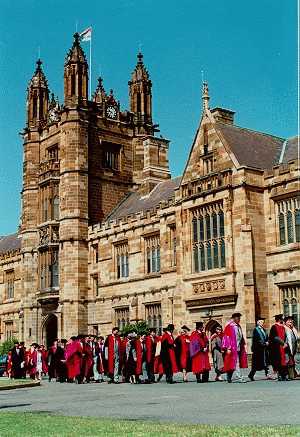Другие журналы
electronic publishing
ENGINEERING BULLETIN
Publisher: All-Russian public organization "Academy of Engineering Sciences named after A.M. Prokhorov".
Australian Universities Take Steps to Increase Numbers of Indigenous Students and Academics
17.04.2011
 Indigenous Australians have long
been under-represented in their country’s universities, but now some
institutions are creating leadership posts to help increase the number
of indigenous students and academics. The University of Sydney
announced that a new deputy vice chancellor would be responsible for the
institution’s strategy and services for the indigenous.
Indigenous Australians have long
been under-represented in their country’s universities, but now some
institutions are creating leadership posts to help increase the number
of indigenous students and academics. The University of Sydney
announced that a new deputy vice chancellor would be responsible for the
institution’s strategy and services for the indigenous. The University of Queensland created a similar position, with the title pro vice chancellor, last month, while Charles Darwin University has had a pro vice chancellor dedicated to indigenous leadership since 2008.
Indigenous people account for 2.4 percent of the population but constitute only 1.25 percent of students entering universities, according to a report by the Center for the Study of Higher Education at the University of Melbourne.
Michael Spence, vice chancellor at the University of Sydney, said Shane Houston, the new deputy vice chancellor, would develop a strategy to advance indigenous participation.
“We recognize the need to play a leading national role in the process of reconciliation, and, through education, to help bridge the economic and social divides that persist between indigenous and nonindigenous Australians,” Mr. Spence said in a statement.
Mr. Houston’s role will include trying to increase the number of indigenous students and their retention rates, and to raise the number of indigenous academics on campus.
He said the university also wanted to help indigenous communities find answers to the challenges they confront by conducting research in partnership with them, and contribute to “Australia’s effort to build a fairer and more compassionate, more robust society.”
While the number of indigenous students who complete high school has risen in recent years, only 45 percent of indigenous students who start high school complete the six years of schooling necessary to be eligible for university.
That compares with 77 percent among nonindigenous students, according to 2009 data compiled by the Australian Bureau of Statistics.
Mr. Houston said that when he finished high school in the early 1970s, he was one of only 34 indigenous people to have completed high school in the state of New South Wales.
“The creation of a professional, well-educated cadre in Aboriginal society will help raise everyone’s ambitions and expectations,” he said.
Full text of the article: New York Times
| Authors |
| Press-releases |
| Library |
| Conferences |
| About Project |
| Phone: +7 (499) 263-69-71 |
|
||||
| © 2003-2024 «Инженерный вестник» Phone: +7 (499) 263-69-71 | |||||



